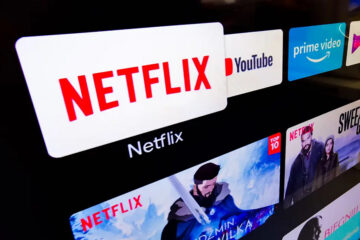The Motive Behind Netflix’s Streaming Data Revelation

Netflix’s recent release of its comprehensive viewership report has shed light on the streaming giant’s programming landscape. However, it begs the question: Why did it take so long for Netflix to provide such detailed insights? Co-CEO Ted Sarandos recently addressed this inquiry, unveiling the rationale behind the company’s prolonged silence on its viewership metrics.
Strategic Secrecy
In a podcast interview with Puck’s “The Town,” Sarandos elucidated Netflix’s initial reluctance to disclose extensive viewership data. He revealed that, in the nascent stages, the company deliberately refrained from unveiling detailed metrics to avoid inadvertently aiding potential competitors. By withholding this information, Netflix aimed to maintain a strategic advantage in an increasingly competitive market landscape. Moreover, the absence of traditional overnight ratings and box office metrics resonated positively with content creators, fostering a sense of artistic freedom and detachment from conventional performance benchmarks.
Nuanced Differentiation
Sarandos emphasized the nuanced disparity between Netflix’s on-demand content model and traditional linear broadcasting. With entire seasons of shows dropping simultaneously, Netflix sought to avoid juxtaposing its viewing metrics with conventional ratings systems. Sarandos expressed concerns that such comparisons could misrepresent the distinct nature of Netflix’s viewing patterns and undermine the platform’s unique value proposition. Thus, rather than inviting potentially misleading comparisons, Netflix opted for transparency through silence, refraining from divulging data that might be misconstrued or misrepresented.
Addressing Mistrust
Despite Netflix’s strategic rationale, Sarandos acknowledged that the absence of comprehensive viewership data inadvertently fueled skepticism and mistrust among stakeholders. Content creators and industry observers alike interpreted Netflix’s secrecy as a sign of opacity, prompting speculation regarding the platform’s motives and performance metrics. Sarandos conceded that this atmosphere of mistrust was detrimental to Netflix’s reputation and emphasized the need for greater transparency to dispel misconceptions and foster trust among stakeholders.
Embracing Simplicity
In retrospect, Sarandos characterized Netflix’s approach to business as fundamentally straightforward. He emphasized the importance of delivering compelling content to audiences and reiterated that viewership metrics, while significant, should not overshadow the primary goal of creating exceptional programming. Sarandos underscored the simplicity of Netflix’s business philosophy, asserting that success hinges on the quality of the content offered and its resonance with audiences. Despite the allure of intricate data analytics, Sarandos emphasized the enduring significance of content excellence as the cornerstone of Netflix’s success.
Implications for the Industry
Netflix’s unveiling of its viewership report sets a precedent for streaming platforms, compelling competitors to reconsider their stance on data transparency. By providing detailed insights into audience preferences and content performance, Netflix has raised the bar for industry standards regarding data disclosure. Moving forward, streaming rivals may face mounting pressure to follow suit and release comparable viewership data to maintain relevance and credibility in an increasingly data-driven landscape.
Conclusion
Netflix’s decision to lift the veil on its viewership data marks a significant departure from its previous stance of strategic secrecy. While the motives behind Netflix’s prolonged silence were rooted in competitive strategy and differentiation, the unintended consequences of opacity necessitated a shift towards greater transparency. As Netflix continues to navigate the evolving streaming landscape, its commitment to simplicity, quality content, and transparency will remain central to its enduring success and influence in the entertainment industry.












